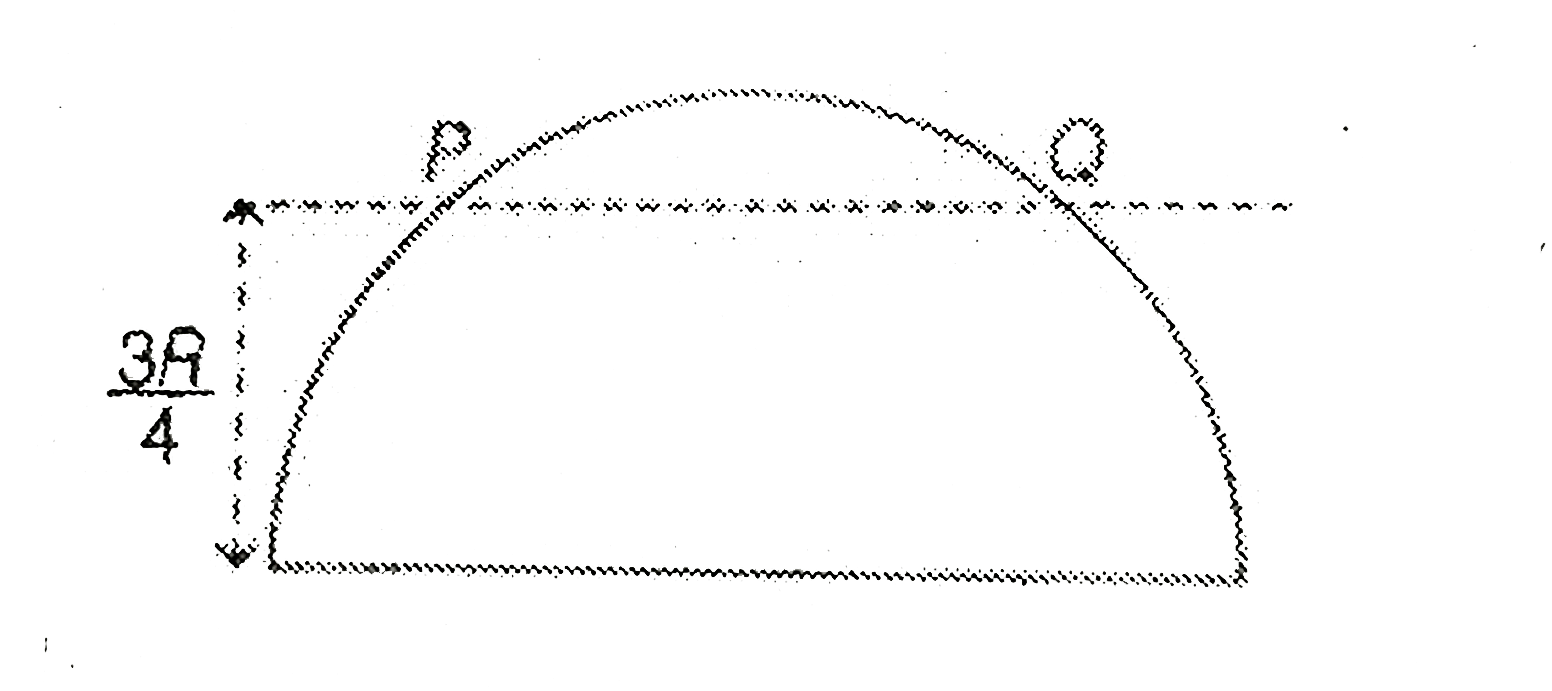The radius of gyration of a solid sphere of radius R about its tangent is
√75R
√25R
√57
R
The correct Answer is:A
To find the radius of gyration k of a solid sphere of radius R about its tangent, we can follow these steps:
Step 1: Understand the Concept of Radius of Gyration
The radius of gyration k is defined in relation to the moment of inertia I and mass m of the object. The relationship is given by:
I=mk2
Thus, we can express the radius of gyration as:
k=√Im
Step 2: Determine the Moment of Inertia about the Center of Mass
For a solid sphere, the moment of inertia about an axis through its center of mass (denoted as IAB) is given by:
IAB=25mR2
Step 3: Apply the Parallel Axis Theorem
To find the moment of inertia about the tangent axis (denoted as IXY), we apply the parallel axis theorem, which states:
IXY=IAB+md2
where d is the distance between the two axes. In this case, since the tangent is at a distance R from the center of the sphere, we have d=R.
Step 4: Calculate the Moment of Inertia about the Tangent Axis
Substituting the values into the equation:
IXY=25mR2+mR2
This simplifies to:
IXY=25mR2+55mR2=75mR2
Step 5: Calculate the Radius of Gyration about the Tangent Axis
Now, we can find the radius of gyration kXY:
kXY=√IXYm=√75mR2m=√75R2
This simplifies to:
kXY=R√75
Final Answer
Thus, the radius of gyration of the solid sphere about its tangent is:
kXY=√75R
The radius of gyration k is defined in relation to the moment of inertia I and mass m of the object. The relationship is given by:
I=mk2
Thus, we can express the radius of gyration as:
k=√Im
For a solid sphere, the moment of inertia about an axis through its center of mass (denoted as IAB) is given by:
IAB=25mR2
To find the moment of inertia about the tangent axis (denoted as IXY), we apply the parallel axis theorem, which states:
IXY=IAB+md2
where d is the distance between the two axes. In this case, since the tangent is at a distance R from the center of the sphere, we have d=R.
Substituting the values into the equation:
IXY=25mR2+mR2
This simplifies to:
IXY=25mR2+55mR2=75mR2
Now, we can find the radius of gyration kXY:
kXY=√IXYm=√75mR2m=√75R2
This simplifies to:
kXY=R√75
Thus, the radius of gyration of the solid sphere about its tangent is:
kXY=√75R
Topper's Solved these Questions
- ROTATIONBOOK - DC PANDEY ENGLISHCHAPTER - ROTATIONEXERCISE - Check point 9.2
20 Videos
- ROTATIONBOOK - DC PANDEY ENGLISHCHAPTER - ROTATIONEXERCISE - Check point 9.3
15 Videos
- ROTATIONBOOK - DC PANDEY ENGLISHCHAPTER - ROTATIONEXERCISE - (C) Chapter Exercises
39 Videos
- RAY OPTICSBOOK - DC PANDEY ENGLISHCHAPTER - RAY OPTICSEXERCISE - Integer type q.
14 Videos
- ROTATIONAL MECHANICSBOOK - DC PANDEY ENGLISHCHAPTER - ROTATIONAL MECHANICSEXERCISE - Subjective Questions
2 Videos
Similar Questions
Knowledge Check
The radius of gyration of a solid sphere of radius R about a certain axis is also equal to R. If r is the distance between the axis and the centre of the sphere, then r is equal to
ARB0.5RC√0.6RD√0.3R
Find the radius of gyration of a hollow uniform sphere of radius R about its tangent.
View SolutionThe radius of gyration of a uniform solid sphere of radius R., about an axis passing through a point R2 away from the centre of the sphere is:
View SolutionThe moment of inertia of a solid sphere of radius R about its diameter is same as that of a disc of radius 2R about its diameter. The ratio of their masses is
View SolutionThe radius of gyration of a solid hemisphere of mass M and radius Rn about an axis parallel to the diameter at a distance 34R is given by (centre of mass of the hemisphere lies at a height 3R/8 from the base.)

View SolutionThe radius of gyration of a uniform disc of radius R, about an axis passing through a point R2 away from the centre of disc, and perpendicular to the plane of disc is:
View SolutionThe radius of gyration of a uniform disc of radius R, about an axis passing through a point R2 away from the centre of disc, and perpendicular to the plane of disc is:
View SolutionThe radius of gyration of a uniform circular ring of radius R, about an axis which is a chord of circle of length √3R is ,
View Solution